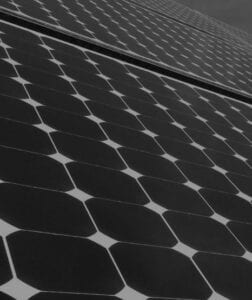Discover here how much silver is used in solar panels.
People seeking for an alternate power source or a grid backup are becoming more and more interested in solar panels and the equipment that go with them.
Unbeknownst to many, silver plays a crucial part in the production of these panels, and the ongoing increase in demand for solar energy has an impact on its availability.
Demand For Solar Panels Is Driving Up Silver Prices.
The reason silver is such a crucial component of solar panels is that it has an extraordinarily low electrical resistance.
Its conductivity cannot be adequately matched by other metals that are closely related for these panels.
Silver is so important that it may account for up to 6% of the overall cost of making each panel unit.
Up to 20 grams of silver may be used to make a typical panel that is 2 square meters in size.
The solar photovoltaic (PV) cells include a silver paste that gathers the electrons produced when sunlight strikes the panel.
Silver transforms sunlight into energy as efficiently as possible due to its high conductivity.
The demand for solar energy and the market trend of silver were recently examined in a market trend analysis by London-based consultant CRU.
This analysis indicates that favorable government policies and international initiatives to reduce our dependency on fossil fuels would likely result in continued industrial development for solar power.

Even industrial facilities, particularly those in isolated areas, now see solar as a viable alternative to grid-supplied electricity.
According to recent study, the cost of using silver to construct each solar panel unit would rise by more than 10% by the end of 2020.
It’s also important to note that the rising cost of its contribution to the panels may eventually be far more than its cost per unit for any other industrial usage of silver.
About 8% of the yearly physical silver supply available to the globe was consumed by the solar panel manufacturing sector as of 2018.
The need for solar power systems is predicted to expand in the near future across the whole globe, but particularly in quickly developing nations like China.
This might result in a brief boost in the price of silver.
Naturally, this would have a detrimental impact on the price of making solar panels.
Future Solar Panels Won’t Need As Much Silver.
According to the CRU analysis, during the next ten years, the PV industry will require 81 million ounces of silver annually.
In order to make PV cells in 2019, a lot more silver was utilized (100 million ounces).
The market demand may have peaked in the prior year, according to this predicted reduction.
Another important point is that PV cells produced from metals other than silver, like copper and aluminum, often end up being less trustworthy.
This poses a significant obstacle to the commercial development of these non-silver PVs, but it’s one that top manufacturers are working to overcome.
Getting Used Silver’s Value Back for PV Equipment
Although solar panels have lengthy lifespans (some types may be useful for up to 30 years), silver is a limited natural resource, therefore the demand for silver can be beneficial for owners of damaged or outdated solar equipment.
Silver from harmed or otherwise unusable PV cells can be extracted, and the value recovered, using special direct-to-refinery methods.
The value of this silver may compensate for solar installation-related disposal or removal expenses.
Even though the impact of the solar sector on silver prices reduces, solar panels still provide a number of valuable trace elements.










